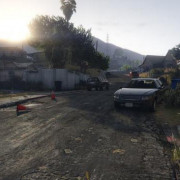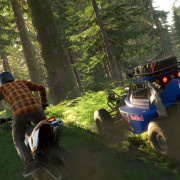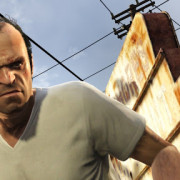Warhammer: age of sigmar — руководство для начинающих
Содержание:
История[]
После падения Мира-что-был, в котором Морати была видной фигурой – древней королевой, отличающейся коварством и властолюбием, сыгравшей одну из главных ролей в событии, называемом Раскол, которое сформировало судьбу эльфийской расы Мира-что-был, Морати была найдена своим сыном Малерионом в центре поляны, заполненной теневыми демонами. Хотя она обрела плоть, но всё же изменилась с момента Конца Времён и бегства из цепких когтей Слаанеша; воссоединение не принесло сыну и матери радости, их беседа была наполнена обвинениями и гневом, но всё же в конце концов родичи смогли прийти к временному перемирию, присоединившись к Великому Альянсу Зигмара.
После того, как Малерион, Тирион и Теклис захватили Слаанеша и заключили его в темницу, вернув поглощённые души альвов, Морати получила часть этих душ, из которых создала Дочерей Каина — культ женщин-альвов, поклоняющихся Каэла Менша Каину (по образу и подобию культов Каина Мира-что-был).
Используя Маткойр (созданный ей большой магический котёл), Морати в Хагг Нар, поселении-святилище Каина, трансформировала полученные души альвов, создав Мелузай и Кхинерай. Она нарекла себя Верховным оракулом Каина, и её Дочери начали процветать, увеличиваясь в числе и копя силы; города-храмы культа начали распространяться по Владениям Смертных.
Со временем она оставила бывших союзников, не сумев манипулировать ими, разойдясь даже с Малерионом и покинув Друкирот, столицу их нового королевства, которую они вместе создали для себя
В Эру Зигмара она воссоединилась с Альянсом, рассматривая его как способ не только отомстить всем тем, кто отвергал, презирал или мучил её, но, что более важно, дабы стать истинным божеством, подпитываемым кровавыми жертвами в свою честь.
SKAVEN
Ratmen. Humanoid rats that bring all the stink, pestilence, and wretchedness you’d expect from such a verminous race. Individually, they’re yellow-bellied and bitter, but they band together to form a domineering force of shocking strength and matted fur. They’re not all dumb rodents, though. Technologically inventive, the Skaven clans wield deadly inventions – from handheld bombs, to gatling guns, to lightning cannons – alongside arcane sorceries, and monstrous mutated, beastie-boy rats that hulk across the field to stamp warriors and chew flesh.
Beastie boy rats hulk across the field
Very much a horde army, Skaven send barrages of rats to overwhelm enemies and use pernicious condition attacks, like poisons and plagues, to chip away at their health. But be wary of your gutless troops, as they’ll turn and flee at the slightest retaliation – so rely on specialists to supplement the underlings.
Skaven lean into the fun side of Age of Sigmar. Snivelling rats that come in all shapes and sizes, their repulsiveness is as entertaining as their in-game strengths, and their striking (if often gross) larger models make for great sculpts to display off the battlefield, too.
Эра Хаоса. Предательство Нагаша[]
Объединив усилия, Тёмные Боги начали настоящую Эру Хаоса. Они прорвали огромную прореху в завесе между измерениями, и из Владений Хаоса вырвались бесчисленные демонические легионы. Они обнаружили, что их уже ждёт новый предводитель – Архаон, Уничтожитель миров и величайший из смертных генералов. Рядом с ним стояли ряды закованных в железо воинов Хаоса, кровожадные варвары и стада свирепых зверей.
Архаон намеревался захватить узловую точку – связующий миры мост, называемый Средоточием. В каждом из Владений находилась особая арка – врата, ведущие на мистический путь, пересекающий пустоту к другим мирам. Вокруг этих арок были выстроены огромные города и крепости, охранявшие самые широкие и стабильные проходы между Восемью Владениями. Так началась Узловая Война, на время которой сама история задержала дыхание.
Благодаря бесчисленным ухищрениям и марш-броскам Архаон сделал так, что нападению подверглись одновременно все восемь врат на Средоточие. В каждом из владений вспыхнули кровавые битвы, когда силы Хаоса начали штурм обнесённых стенами городов и огромных укреплений. Стремясь предотвратить катастрофу, воители и боги из союза Зигмара ринулись на помощь осаждённым.
Последовали долгие и жестокие сражения, каждая сторона могла похвастаться великими победами и скорбела о тяжёлых поражениях. То была война легенд, когда сами боги вступали в бой, чтобы помочь своим детям и последователям. Но когда воинства Хаоса уже дрогнули, когда настал переломный момент, Арка Шаиша пала, и битва захлестнула Средоточие – мост ко всему бытию. Ситуацию сдвинуло с мёртвой точки предательство, вызвавшее все последовавшие катастрофы.
Не было владения лучше защищённого, чем Шаиш, Владение Смерти. Многие утверждают, что Нагаш заключил сделку с Тёмными Богами, предав союз Зигмара в обмен на обещание, что Хаос не станет вторгаться в загробные миры. Если он действительно заключил такое соглашение, то был также предан. Ведь ещё во время вторжения Зигмара, жаждавшего возмездия, поднялась иная угроза, бросившая вызов его власти.
Идеально выбравшие время скавены хлынули из прогрызенных ими туннелей, обрушив на оставшиеся цитадели Нагаша орды пищащих грызунов и весь свой арсенал дьявольских орудий. Несмотря на то, что Война Костей закончилась ничем, она ещё сильнее ослабила Нагаша, и потому Великий Некромант не смог остановить Архаона и его воинства, пришедшие со Средоточия, чтобы захватить его земли.
Maggotkin of Nurgle
All blighted skin and pus-filled abscesses, the Maggotkin of Nurgle are loyal followers of the Plague God, who devotedly spread his many poxes across the Realms. Organs spill out from the gaping holes in their flesh, and hideous tentacles pierce their putrid sides. When they’re not checking out what cool new medical afflictions have cursed they’re bodies, they’re busy gouging out the eyes of enemies (it makes more room for maggots).
Boys in blue: Check out our Warhammer 40k Ultramarines guide
Apart from being gorgeously disgusting to look at, they also pose a formidable combat force. Massive daemon-spawn bring the scale you’d expect of any Chaos army, swinging swords or vomiting acidic bile, and the ‘noble cavalry on trusty steeds’ are mouldering Plaguebearer daemons, flying giant, plague-swollen mosquito mounts into battle to spread unholy contagion.
Physically decaying but imbued with their patron god’s fecund, regenerative power, they’re resilient to attacks and hard to kill for good, while leveraging the magic of their spellcasters for powerful damage combos. Ultimately, though, you do it for the sculpts – if you can hold down your breakfast while looking upon them, they are truly incredible.
Kruleboyz
Introduced in Age of Sigmar’s third edition launch box, Dominion, the Kruleboyz are another faction of Greenskins. While the Orruk Warclans are beefy and bellicose, and the Goomspite Gitz rabid and rowdy, this lot are cunning and devious. Hiding in swampy bogs, they were unknown to most players in the Mortal Realms, only revealing themselves to follow the ancient deity Kragnos in his destructive rampage.
As a new faction, official lore is scant, and favoured playstyles even sparser. So far, we’ve seen a lot of melee units with appropriately silly names like ‘Hobgrot Slittaz’ or ‘Killaboss with Stab-grot’, as well as a few beasties to go along with them. They sport venom-encrusted weapons that can quickly dispatch enemies on favourable dice rolls, but their full potential is yet to be discovered.
Cultists
No two cultists of Sigmar are the same. The varying orders, individual temples, and widely divergent, local traditions demand Sigmar’s representatives wear a broad array of different ceremonial outfits and cultivate some truly bizarre hairstyles.
The Order of the Silver Hammer includes both warrior priests and witch hunters. Its warrior priests are almost always found wearing yellow-detailed black robes over protective leathers. Sacred breastplates—emblazoned with griffons, comets or crosses—and wide, high-necked gorgets are the preferred choices for armour, but cheaper chainmail is often worn in their stead. Hair is commonly shaved when a novitiate is elevated to the order, although some priests allow patches to grow back, where they carefully shave holy symbols or solemn liturgies.
The Order of the Anvil is the Cult’s monastic wing, whose members live in worldly isolation and preserve Sigmar’s deeds and law. Its different monasteries vary in their required garb and hairstyles. Simple grey or black habits are common, although brown is known in the east of the Empire, and green or orange are worn in some isolated monasteries of Talabecland and Reikland. Hair is usually shaved, with novitiates tonsured, but this again varies, with some monasteries demanding that hair grow wild, have stripes shaved through it, or be caught in hundreds of tight braids. Wide, high-necked collars are also common, mirroring the gorgets of the warrior priests.
The massive Order of the Torch, the largest of the Cult’s orders, comprises the local Sigmarite clergymen all across the Empire. In terms of vestment, is even more diverse. Black robes may be the standard, with brown and grey also common, but some temples wear white, orange, red or even purple robes, as dictated by local traditions and superstitions—although each variance requires, at some point, permission from the Grand Theogonist. High, wide collars are again common, although far from universal, as are shaved heads. The typical hammers, comets, griffons, holy seals and prayer parchments are usually displayed in one fashion or another, although some temples teach that such open displays of faith idolise the objects rather than glorifying Sigmar. Another common tradition is to wear holy books, sometimes at the waist, sometimes upon the back, as a symbolic burden. This is taken to extremes by some priests, who wear miniature holy texts on their foreheads to protect their minds from heresy, tying them in place with strips of leather.
The smaller Order of the Cleansing Flame is made up of inquisitors and witch hunters. It tightly controls its ceremonial dress in the same way it carefully monitors its members. Robes are black, detailed in red, and hair is cropped close to the skull, with elaborate tonsures sported by ranking members of the order. Floor-length, hooded, black cloaks are also worn, although novitiates may not raise the hood. Unlike the other primary orders, this ceremonial garb is normally only worn on important occasions. When travelling, Cleansing Flames wear whatever clothes allow them to fulfil their order’s purpose, which include dressing in the garb of other orders, or disguising themselves as peasants or travelling merchants. No matter what they wear, all members of the order own a holy amulet with a single flame in its centre; this is the badge of their order, used to prove they are on Sigmar’s business.
The Cult of Sigmar also includes orders of military Templars, such as the Knights of the Fiery Heart, Knights of Sigmar’s Blood, and Knights Griffon.
Signs of Sigmar

Cultists of Sigmar have two primary salutes. The first is the “V” finger salute, representing the twin-tailed comet. The cultists hold their left hand on their chest, right arm thrust to the front, hand raised to head level with the fist clenched, and the first and second fingers extended. This sign is reversed (palm facing the face, rather than facing the person saluted) to be used as a taunt and insult to Sigmar’s enemies. This salute is very popular with insolent children.
Sigmar’s second sign is a ward, and involves making a hammer shape on the trunk. The cultist’s forefinger touches the navel, the “V” of the collarbone, the right chest, and the left chest. It is commonly employed as a shield against the forces of Chaos.
When seeking the guidance of Sigmar, the cultist will take the same “V” finger salute and run it across his eyes in the hopes of seeing something he missed the first time around. When a Sigmarite slaps his fist, it’s an invocation of anger, but when he pounds his fist in his palm, he’s urging restraint.
Gloomspite Gitz
The Orruks’ shorter, skinnier, but no less deadly cousins, these conniving backstabbers kit out their forces with a selection of creepy creatures, and worship a partially-sentient planetoid, The Bad Moon, vying for its affection and celestial power.
Snivelling grots, rotund squigs, cumbersome troggoths, and fearsome giant spiders, the forces of the Gitz are perhaps the closest Age of Sigmar comes to slapstick comedy. Yes, they’re wicked and slimy creatures that won’t think twice about spilling your guts on the floor, but there’s something hilariously endearing about a goblin shaman struggling to balance on a walking toadstool.
Pigment perfection: These are the best paints for miniatures
Another versatile faction, the Gitz can be played as a horde army to overwhelm the enemy through sheer volume of units, a magic army that concentrates on damage-dealing spellcasters to turn enemy forces into goop from afar, or a cavalry-led force charging headfirst into the fray on their many-legged mounts. They also make for great painting, with a variety of cartoonish sculpts to draw every eye on the battlefield.
Великий Альянс Разрушения
Орруки
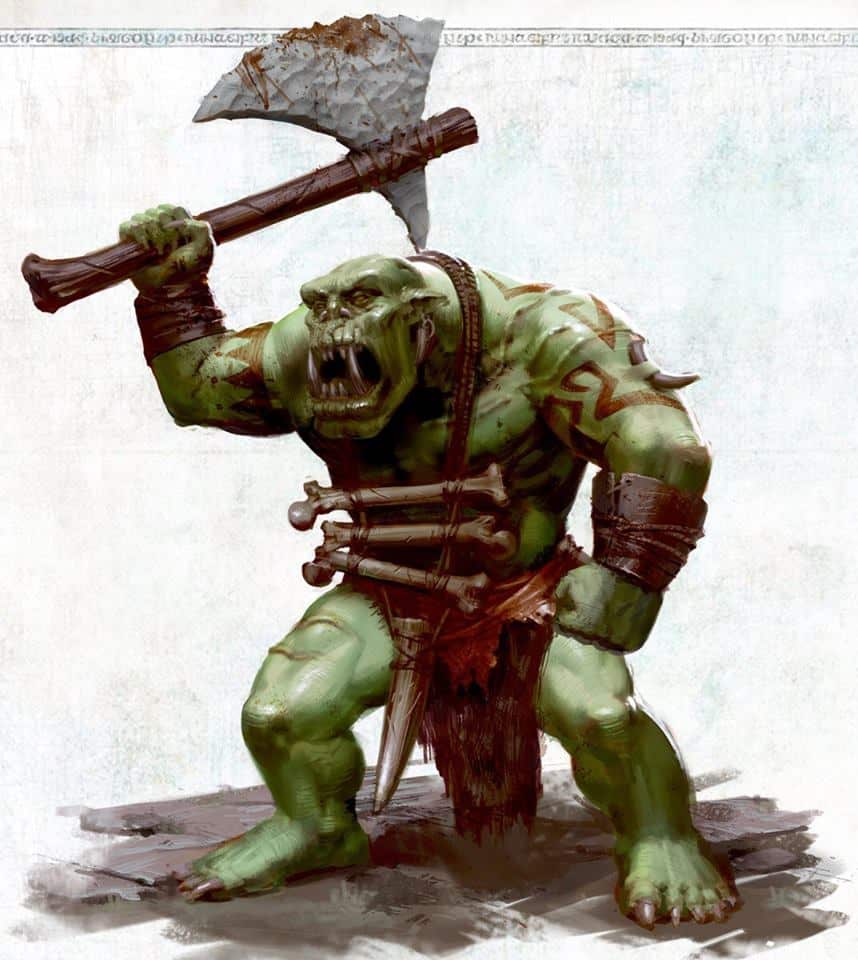
Ранее известные как орки, зеленокожие орруки очень агрессивны и непредсказуемы. Они рассеяны по всем Владения множеством племен, воюющих друг с другом и остальными смертными и не смертными. Власть, право сильного и наслаждение от битвы. Их армии собраны не только из самих орруков, но и из разделяющего их «философию» сброда из мелких рас.
Зеленокожие поклоняются куче мелких божков и Горкаморке. Горкаморка состоит из двух сущностей – яростного Горка и коварного Морка. Во время Вааагх! они объединяются и выходят на поле боя. Вааагх! – суть магии орруков и гротов, основанной на массовом сознании этих рас. Чем больше орруков сражаются рядом, движимые жестокостью, тем сильнее магия их шаманов.
Железные Челюсти

Самые крупные и подлые из орруков, их условные лидеры. Они носят кованую броню и живут только сражениями. Они сражаются со всеми без разбору: с животными, людьми, силами Хаоса. Где Вааагх! – там всегда они. С началом ответных атак Сигмара в последнюю эпоху, орруки объединились под началом Гордрака Кулак Горка для Великого Вааагх!, чтобы снести все на своем пути.

Гроты

В старом мире они назывались гоблины. Зеленокожие, мельче орроков, они часто находятся у них в подчинении. Такие же варвары, они воинственны и неуправляемы, разбиты на мелкие племена, поклоняются тем же богам. Например, гроты Паучьего Клыка верят в паучью сущность Горкаморки и идут в бой на огромных ядовитых пауках. Их владения затянуты паутиной.
Огоры
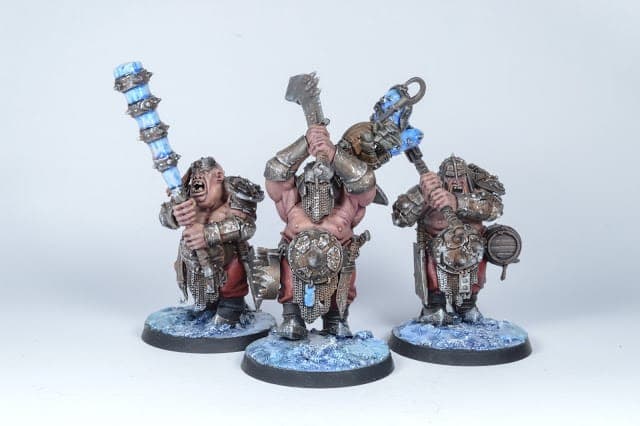
К оррукам часто примыкают огоры (огры) – человекообразные громилы с дом величиной, живущие в пещерах и развалинах. У них всего два интереса в жизни: еда и насилие. Они довольно неуклюжи и тупы, но огромны и очень сильны. Толпа огоров может снести целый город и пообедать его жителями.
Lumineth Realm-lords
High aelves with amazing headwear. The Lumineth Realm-Lords combine the weaponry of a typical medieval army with powerful elemental magic. Cavalry lancers pierce enemy ranks, archers fill the sky with volleys of missiles, and pikemen form a tight defensive line, all while a colossal armoured spirit – half mountain, half cow (yes, as in the bovine, and endearingly nicknamed Battle Cattle) – swings a magical hammer the size of duardin skyship. Decked in gleaming white armour from head to toe, they’re staunch defenders of Order and will quell any corruption that crosses their path.
Warpin’ about: Our Warhammer 40k Chaos factions guide
The Lumineth Realm-Lords are a real tactician’s army on the tabletop. Position your units resourcefully to weather your enemy’s charge and return a punishing missile attack. But they’re also powerfully magical. Every unit of your army, down to the humble archer, is magically attuned, capable of collectively dispelling enemy casts and boosting their strength to pierce armour.
If your history with Warhammer is seeing one ancient White Dwarf cover featuring Warhammer Fantasy Battles’ gleaming, pointy-helmeted High Elves and thinking ‘wow, those white and blue guys look cool”, then friend, welcome to the Realm-Lords.
Aspects
Caretaker of Humanity
This aspect is worshipped by the Order of the Dove, whose priests and priestesses tend to the wounded, sick and injured.
God-King
The golden, bearded aspect of Sigmar venerated by many of the Azyrites of the Free Cities and the Stormcast Eternals.
|
The God-King stood before him, arrayed in golden war-plate. The air twisted about him, as if the realm were not quite able to bear his weight. He stood half a head higher than the tallest of his warriors, and there was an elemental strength to him – as if he were the raw fury of the storm, given solid form. But his presence was not merely physical. Sigmar’s immensity stretched beyond the boundaries of the corporeal, into spheres beyond the sight of mortal men. He was the cold gaze of the moon and the warm laugh of the sun. He was the sound of clashing steel, of avalanches and howling winds.
To one possessing storm-sight, Sigmar appeared as a shard of the firmament itself. A being of pure starlight, impossible to look at for long. The God-King was Azyr, given mind and voice. In his merest gesture was the movement of worlds, and in his gaze, the flare of falling stars. Balthas blinked, trying to ignore what lay behind the mask of broad, too-human features. The face of a man aeons dead, out of whom a god had emerged.. ~ A description of Sigmar by Balthas Arum. |
Sahg’mahr
This is his title in Shu’gohl, the Crawling City where he continued to be worshiped through the Age of Chaos through the Vurmite Order — The Order of the Worm. A large temple complex to the god was raised in the Sahg’gohl, the Storm-Crown. Following the worm cities liberation from the Skaven, Lector Calva was sent by the Grand Theogonist herself to see to the reorganization of the Order.
|
They are who I am – the Vurmite Order. The Order of the Worm. When the foe burst upon us, we Vurmites defended the holy segments, for the grace and the light of Sahg’mahr, as was our oath and duty. Under a guard of forty, we sent off the most valuable tomes in their possession. The rest fought here, and gave their lives on the steps of the Libraria Vurmis in the name of our Lord Sahg’mahr.
~ Nyoka Su’al’gohl. |
Sehgmar the Benevolent
An aspect of Sigmar worshiped by some members of the Hallowed Knights, and the people they belonged to before they were reforged.
Sigmar the Builder
This was the aspect of Sigmar known to and worshiped by the Everdawn Tribe, the tribe to which Tornus the Redeemed belonged to before he was transformed into Torglug the Despised and subsequently reforged into a Stormcast. To the Everdawn Sigmar is a wise and compassionate god.
Sigmar the Liberator
Sigmar the Liberator is an aspect of Sigmar worshipped by the people of the Free City of Glymmsforge. He is seen as aliberator of the oppressed, a savior of tormented souls, and the seneschl of the Mortal Realms. A statue of him exists in the city, depicting him freeing the oppressed. A second statue of him in the city depicts him as a snarling, weary warrior employing Ghal Maraz to free souls from chains and as a looming figure. A third carrying the world on his back as his foot crushes the skull of a Dark God. All of these statues are found near or in the Grand Tempestus.
Wind-Walker
The Wind-Walker is the aspect of Sigmar worshipped by the Zirc of Lyrra, a nomadic people native to the Zircona Desert. He is said to wear the firmament the same way nomads wear robes. This aspect has very little in common with the gold-clad aspect preferred by the Azyrites.
Zig’Mar Thundercracker
An aspect of Sigmar worshiped by some members of the Hallowed Knights, and the people they belonged to before they were reforged.
Zi’Mar
How the God-King is known to the Sky Seeker tribe in the Realm of Ghur.
|
Zi’Mar, the Rage upon the Storm. It is he who guides our arrows. He who welcomes brave warriors home when they fall in battle. He who blesses the hunt. He is far from us, but his strength guides us still. I am his daughter, and his priestess.
~ Alzheer Nahazim. |
Выставки
Польке провел свою первую персональную выставку в Galerie René Block в Западном Берлине в 1966 году, а в 1970 году у него была первая персональная выставка в Galerie Michael Werner. Его первая персональная выставка в Нью-Йорке картин, сделанных по крайней мере десятью годами ранее, была в Галерее Холли Соломон в Сохо в 1982 году. После выставки 1987 года в Художественном музее Милуоки, объединяющей Уорхола, Бойса и Польке, Музей современного искусства. В 1991 году в Чикаго была организована персональная выставка Польке. Польке участвовал в трех выставках documenta и нескольких выставках Венецианской биеннале .
К последним годам его жизни художественные достижения Польке были отмечены на крупномасштабных выставках по всему миру, включая персональные выставки в галерее Тейт Модерн в 2003–2004 годах, в Токийском Королевском музее Уэно в 2005 году и в Центре Гетти в Лос-Анджелесе в 2007 году. В 2007 году «Музей современного искусства» ( MUMOK ) провел выставку работ Польке под названием «Зигмар Польке: ретроспектива». Также в 2007 году на Венецианской биеннале 2007 года впервые был показан монументальный цикл картин « Осевой век» (2005–2007). Художник выразил недвусмысленное пожелание, чтобы работа оставалась экспонироваться в Венеции. Польке планирует провести ретроспективу «Алиби: Зигмар Польке 1963–2010» в Музее современного искусства в Нью-Йорке с 19 апреля по 3 августа 2014 года, а затем посетит галерею Тейт Модерн, Лондон, Великобритания, и Музей Людвига, Кельн. , Германия.
Демоны Кровавого Бога[]
Демоны Кхорна – воплощение первобытной ярости и жажды крови, они не используют хитрость и презирают трусливый обман магии. Они хотят лишь чувствовать под своими тлеющими когтями растерзанную плоть, давя и разрезая её оружием, выкованным в преисподней, пока поле битвы не оросится кровью.
Демонические орды Кхорна разливаются по Владениям Смертных, словно кровь, хлещущая из разорванной артерии. С свирепостью клинков они прорубаются сквозь армии воинов, чтобы удовлетворить вечную жажду крови своего прародителя. По мере их продвижения, пропитанные кровью рога собравшихся кровопускателей Кхорна образуют зубчатое море, сочащееся багрянцем. Шум трубящих рогов, рык боевых кличей и выкрикивание приказов заглушает поле битвы в убийственной какофонии. Позади орды доносится рёв адских боевых машин, словно пасти Черепушек и Кровавых Тронов дьявольски вопят в ожидании предстоящего праздника. По флангам легиона рыщут стаи слюнявых гончих плоти, принюхивающихся к сладкому запаху страха, что исходит от противника, в то время как вокруг них дрожит и трескается земля под проклятыми копытами могущественных джаггернаутов, прибывших по рёву кроводавов. Устремляясь вперёд, краснокожая волна меди и железа меркнет в тени могучего кровожада, который расщепляет воздух и подгоняет легионы внизу каждым ударом своих больших кожаных крыльев.
Когда демонов Кхорна спускают на врагов, они сражаются с неумолимой яростью своего бога-отца. Они купаются в брызгах тёплой крови, которая извергается с каждым взмахом когтей и клинков, а после срывают черепа со всё ещё живых жертв. Демоны убивают своих врагов до последнего, так как милосердие – это проклятие для повелителя бойни, и, следовательно, проклятие для его диких детей.
Демоны Кхорна не являются живыми существами из плоти и крови, населяющими Владения Смертных. Они, скорее, проекции бесконечной ярости их повелителя, воплощённые в жизнь и заданную форму по его неограниченной воле. Они зарождаются в бурных мутных водах во владениях Кхорна, где всем повелевает всемогущий Кровавый Бог. Они – разбитые осколки его ненавистной сущности, порождённые гневом и поглощённые варварскими порывами. Каждому демону даётся жизнь для единственной цели – убивать, и они обрушиваются на Владения, наделённые мощью боевого мастерства Кхорна. Демоны – ужасная пародия на смертных существ, чьи ужасные формы имитируют животных и людей. По всем Владениям Смертных ужас легионов демонов Кхорна изображается и интерпретируется по-разному: от племенных сказаний до научных фолиантов ужаса. Во всех краях существуют легенды и притчи, предупреждающие, что, хотя войска Кровавого Бога ужасно жестокие, они всего лишь ударная волна его гнева. В Акши, в ложах Обсидиановых Холмов, огненные истребители описывают грохот марширующих армий демонов как землетрясение, сотрясающее землю перед поразительным, грандиозным извержением. Для сильванетов на полях Гирана единичные клинки Кхорна сродни тысячам зазубренных зубов вдоль края большой лучковой пилы, контролируемой рукой самого Кровавого Бога. Только в Азире среди сморщенных сланнов есть истинное понимание демонических орд Кровавого Бога.
Nighthaunt
A spectral army of scythe-wielding and sword-toting apparitions, the Nighthaunt is Nagash’s elite vanguard, gliding across the battlefield to bring all living things the cold touch of death. Clad in black hoods that morph into their ghostly lower halves, they bring cavalry, wraiths, and all manner of see-through soldiery to the field, all of them filled with an eternal hatred of those goody-two-shoes Stormcast Eternals.
Mechanical crypts: Read our guide to Warhammer 40k’s Necrons
Hard-hitting and tough to kill (how do you kill a ghost, after all) the Nighthaunt are another forgiving army that’s easy to pick up but challenging to master.
Ignoring fatal wounds keeps their unit count high, and flying means they can circumvent enemy lines to pick off the defenceless. Although packed with hero units to support a solid frontline, keep them well-defended or the destruction of those figureheads will leave the rest of your force dissipating into so much harmless vapour.
Related Races
When the aelven souls were freed from the essence of Slaanesh, they were tainted by the experience of being part of the substance of the Chaos God and became something other than aelves. The souls free by Morathi were made by her into the Scathborn, such as the Melusai and Khinerai.
Any aelven souls that were too weak or corrupted became the leathanam, a class of worker slaves. Teclis created the Cythai, but when they rejected his teachings they became the Idoneth Deepkin.
Though not truly aelven themselves, the Sylvaneth mimic the Wood Elves of the World That Was, who they call «The Protectors.»
Blades of Khorne
Like the sound of Slaves of Darkness but want a little edge to your nefarious warring? Consider the Blades of Khorne and their demonic forces for your next tabletop fancy. Crimson Bloodletter daemons, adept in gouging the vital organs of others in melee combat, rush to the frontlines of conflict, supported by a satanist’s dream dinner party of other devilish creatures – complete with pointy horns, serpent tongues, and bat wings. Other mortal cultists are along for the ride, sporting big axes and big abs.
Alien empires: Read our Warhammer 40k Xenos factions guide
Subtlety has never been Warhammer’s watchword, and this army doesn’t know the meaning of it. Charge forward, hit anything you touch, rinse and repeat. With no ranged or magic units (the blood-god Khorne can’t stand either), and little defensive capabilities, they’re all about the attack. Stay on the attack, never give up the attack, and sure as hell don’t retreat, and you’ll probably do fine.
Редакции
Первое издание Age of Sigmar в 2015 году заменило Warhammer Fantasy Battle . Первоначальный выпуск AoS не включал балльные значения для отдельных единиц — они были добавлены позже — и вместо этого дисбаланс должен был смягчаться за счет количества моделей. Если одна сторона начинает игру с на треть больше моделей, чем другая, меньшая сторона может выбрать для себя условие победы «внезапная смерть». Призыв новых юнитов использовал ту же механику, что и колдовство, и требовал выделения очков подкрепления для каждого вызываемого юнита.
Первоначальный выпуск примечателен тем, что включал в себя множество абсурдных правил, таких как:
Журнал Escapist отметил, что такие нелепые правила можно легко использовать, поскольку ничто в правилах не говорит, что усы должны быть настоящими, и предлагает игрокам покупать новые усы, чтобы удовлетворить условию. Другие такие правила включали в себя повторные броски для игроков, которые притворяются, что едут и разговаривают с воображаемой лошадью, кричат гортанным боевым кличем и сохраняют невозмутимое выражение лица, когда их противник пытается рассмешить их. Некоторые современные обзоры очень критически относились к таким правилам, говоря, что, хотя они, возможно, были задуманы как шутки для поощрения ролевой игры, они открывают игрокам возможность насмехаться и позорить тело.
Второе издание AoS было выпущено в 2018 году после события Malign Portents . Он внес несколько значительных изменений в правила, в частности, пересмотр системы вызова, устранение точек подкрепления и введение бесконечных заклинаний .
Третье издание AoS было выпущено в июне 2021 года после серии кампаний Broken Realms, в которых статус-кво сеттинга был радикально изменен. В новом издании были переработаны система и цели батальона, а также введена новая сюжетная кампания « Путь к славе» .
Великие Альянсы
В ходе новой истории вселенной Вархаммер сформировались Великие Альянсы, между силами которых постоянно происходят сражения в настольной игре «Warhammer: Age of Sigmar».
Великий Альянс Порядка – глобальный союз существ, стремящихся к миру и процветанию. В него входят Грозорождённые Вечные, вольные люди, дуардины, альвы, сильванеты, серафоны. Сигмар – их идейный лидер, из богов его поддерживают Грунгни и Гримнир – боги дуардинов, Алариэль, Тирион, Теклис, Малерион, Морати – боги альвов.
Великий Альянс Хаоса состоит из тех, кто несет волю Темных богов во Владения Смертных. К хаоситам относятся собственно воины Хаоса: Воинство Архаона Всеизбранного, Порабощённые Тьмой и демоны. С ними выступают последователи и подчиненные конкретных богов: кхорниты, нурглиты, тзинчиты, слаанешиты, а также скавены, зверолюды, гномы Хаоса и фамиры (гуманоидные амфибии). Возглавляют их Боги Хаоса, причем к прежней четверке присоединилась Рогатая Крыса, бог скавенов.
В Великий Альянс Разрушения вошли необузданные и дикие существа. Это Зеленокожие (орруки и гроты), огоры, трогготы, гарганты. Поклоняются они Горкаморке и Великой Пасти.
Великий Альянс Смерти возглавляет Нагаш, бывший соратник Сигмара и воплощение ветра магии смерти. Его войска: Повелители смерти, Дворы пожирателей плоти, Мертвые ходоки, Мертвые костетрясы, Маги смерти, Увядшие души и Завсегдатаи ночи.
Хрупкое единство[]
Но уже тогда в опорах новой утопии возникали трещины, ведь некоторые боги пантеона Зигмара стремились в первую очередь к своим целям. И самым проблемным из них был Горкаморка, двухголовый бог зеленокожих.
Устав от постоянного беспокойства, вызываемого Горкаморкой, Зигмар поручил ему очистить дикие владения. Какое-то время роль охотника на чудовищ устраивала самого воинственного из богов, и он истреблял их на равнинах Гура. А тем временем Алариэль отдалялась всё дальше, тоскуя по потерянному былому миру. Теперь она хотела лишь выращивать свои причудливые растения. Её уединения во Владениях Жизни были всё более долгими, ей так не хотелось возвращаться в Небесный Зал для советов и бесконечных препирательств.
Хотя Малерион и Тирион и помогали новорождённым цивилизациям, прежде всего они искали свой народ. И хотя им так и не удалось найти не следа альвского рода, боги слышали в грёзах далёкие горестные крики – вопли проклятых, издаваемые от невообразимых страданий.
История странствий Малериона и Тириона сложна и причудлива, ведь она переплетена с интригами Тёмных Богов. В конце былого мира Слаанеш, Тёмный Князь Хаоса, поглотил слишком много душ, пируя ими вновь и вновь в алчном буйстве. И всё больше и больше душ утягивало в его пасть, пока Слаанеша не захлестнуло ими с головой. И когда мировая буря утихла, Тёмный Князь стал раздувшимся и беспомощным. Обожравшийся Бог Хаоса скрылся в тайном логове в надежде переварить своё пиршество. Но, несмотря на всю свою скрытность Слаанеш не избежал козней Тзинча, который манипулировал Кхорном и двумя новорождёнными божествами альвов.
И так, преследуя собственные цели и схватив Слаанеша, Малерион и Тирион не исполнили свои обязанности перед Зигмаром, ещё больше ослабив Великий Союз.
Kharadron Overlords
Steampunk dwarves (or duardin, to use their proper Warhammer title instead of the Tolkien vernacular) in flying ships. Not content with the murky interiors of mountain caves, these duardin took to the skies in blimps and floating fortresses powered by magical aether-gold to escape their crumbling cities, destroyed at the hands of Chaos.
Technologically-minded and doing their best to ape the chic aesthetic of sky pirates, the Kharadron Overlords come close to a Victorian’ inventor’s speculative perception of the 21st Century – all airborne inventions and rattling machinery. Their voracious appetite for profit, using their mercantile fleet to squeeze every last drop of gold from their traders, wouldn’t be out of place in Victorian Britain, either.
Grim Darkness: Our Warhammer 40K Imperium factions guide
Although primarily composed of sailors and merchants, their forces are heavily armoured and laden with old-timey guns and cannons. Pound enemy defences with thunderous salvos, before using your airborne transport ships to move infantry to the frontlines and finish them off.
But don’t leave them stranded, as the stout duardin’s little legs won’t be fast enough to outrun most opposing forces, should an overwhelming counterattack come to call. Kharadron sky vessels, however, can scoop them up, disengage from battle and fly high above the fray to escape harm. Get the hang of using your gunboats to bombard the enemy while keeping your duardin fighters in the right places at the right times, and you’ll find the Kharadron Overlords among the most powerful armies in the game.

